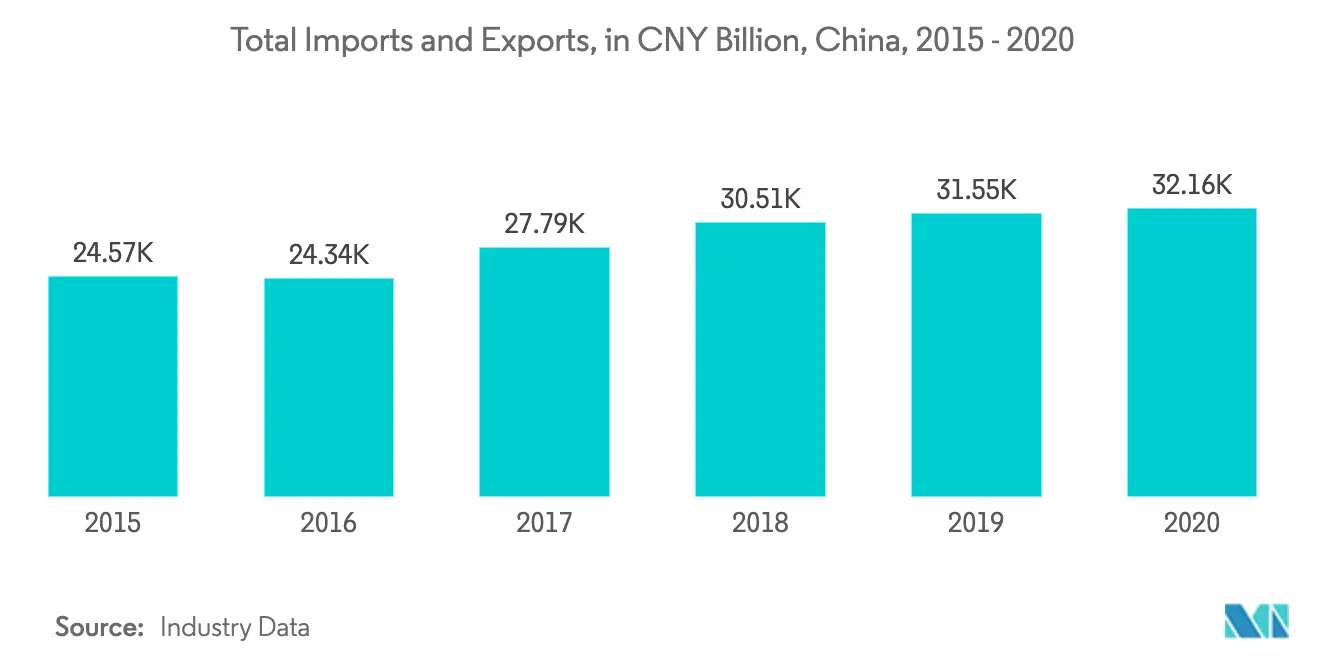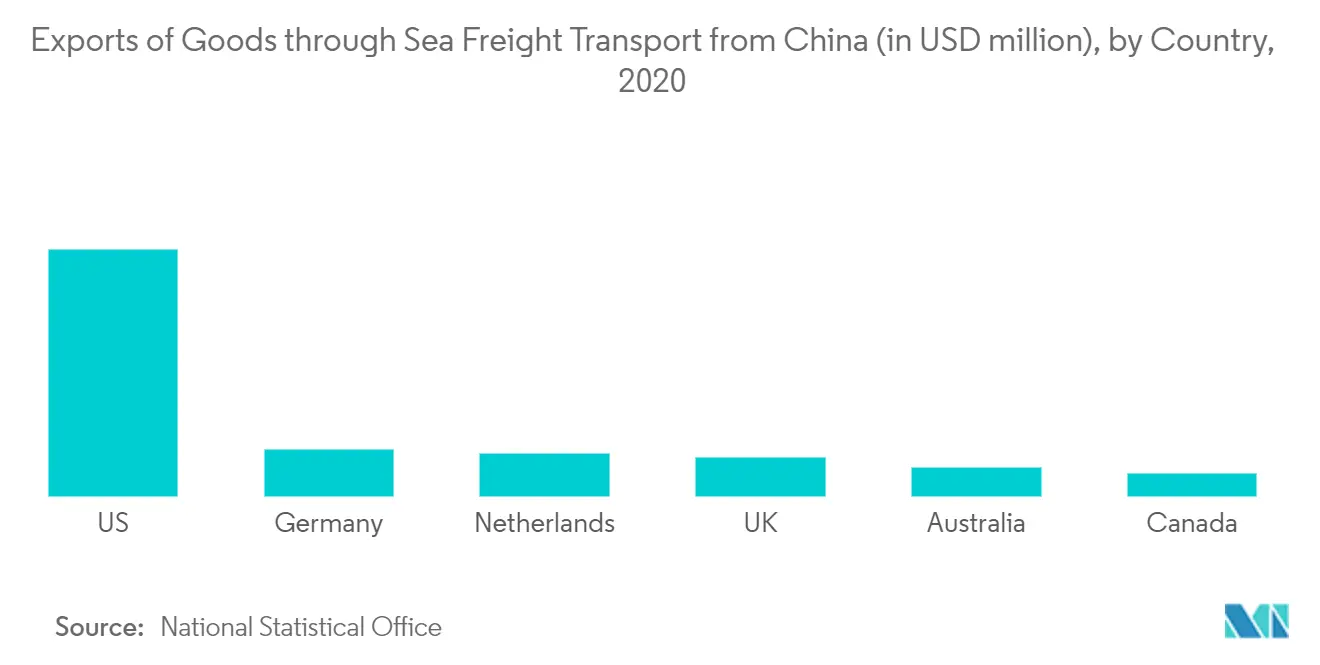Market Trends of China Sea Freight Transport Industry
This section covers the major market trends shaping the China Sea Freight Transport Market according to our research experts:
Positive Trend of Chinese Imports and Exports.
For Chinese export and import businesses, sea freight transport is the most common mode of transit. China's exports increased by 1.5 percent to USD 4.65 trillion in 2020, owing to improved manufacturing output. Exports totaled USD 2.59 trillion, up 3.6 percent, while imports totaled USD 2.06 trillion, down 1.1 percent. China's 1.1 percentage point gain in its proportion of global GDP in 2020 is the highest in a single year since the 1970s. In 2020, trade between the world's two largest economies, China and the United States were back on track. China's exports to United States increased by 7.9% to USD 451.81 billion in 2020, while imports from United States increased by 9.8% to USD 134.91 billion. After the Association of Southeast Asian Nations (ASEAN) and European Union, United States was China's third-largest trading partner in 2020. In 2020, imports and exports to European Union increased by 5.3 percent. Chinese agricultural imports from the United States increased by 66.9% in 2020, with soybean imports up 56.3 percent and pork imports up 223.8 percent. China's exports to United States fell 12.5 percent year on year to USD 418.5 billion in 2019, while its imports fell 20.9 percent to USD 122.7 billion. Although United States administration has continued to disrupt bilateral ties over the past year 2019 through sanctions and export regulations, the COVID-19 epidemic, which has given a significant blow to United States economy, is seen as fuelling its demand for Chinese products, particularly medical and stay-at-home products.
The updated China-ASEAN Free Trade Agreement was signed with the signing of the Regional Comprehensive Economic Partnership (RCEP). According to Chinese customs statistics, trade between China and ASEAN reached 4.74 trillion yuan (USD 722.8 billion) in 2020, an increase of 7%. ASEAN and China are each other's most important trading partners. China has been the Philippines' most important trading partner, both as a source of exports and as a source of imports. China was the country's second-largest investment partner in 2020, especially in infrastructure and manufacturing. China surpassed United States as the European Union's main commercial partner in 2020. Imports from China to the European Union increased by 5.6 percent to EUR 383.5 billion (USD 463 billion) in 2020, while exports increased by 2.2 percent to EUR 202.5 billion.
ASEAN, European Union, United States, Japan, and South Korea are China's top five trading partners, with imports and exports of 4.74 trillion yuan, 4.5 trillion yuan, 4.06 trillion yuan, 2.2 trillion yuan, and 1.97 trillion yuan, respectively, up 7%, 5.3 percent, 8.8%, 1.2 percent, and 0.7 percent.

Demand of Chinese Goods in E-Commerce across the Globe:
In a pandemic-fuelled 2020, consumers spent nearly USD 4.29 trillion online, up from nearly USD 3.46 trillion in the year 2019. Global web sales increased by 24.1 percent in 2020, compared to 17.9 percent in 2019. China's cross-border e-commerce imports and exports totaled CNY 1.69 trillion (USD 261.5 billion) in 2020, up 31.1 percent. E-commerce exports increased by 40.1 percent to CNY 1.12 trillion, while imports increased by 16.5 percent to CNY 570 billion.
In China, cross-border e-commerce (CBEC) has become a more important route for import and export. China's CBEC exports have increased from 2.2 percent to 11.25 percent of the country's overall overseas commerce in the last six years. The government is encouraging CBEC development by increasing the country's international shipping capacity in 2020, as well as creating additional CBEC pilot zones and pilot towns, 50 cities were added to the existing 36 pilot cities for CBEC. China's import and export industries will benefit from the CBEC pilot zones (especially export). China is looking for chances to export products with higher value and margins as it invests heavily in improving its manufacturing facilities. For the first time in 2019, the value of Chinese cross-border B2C e-commerce exports exceeded the value of imports in 2019.
China was ranked as one of the top three most popular vendor countries in 2019 according to a cross-border e-commerce shopping study. Unlike Chinese buyers who seek high-quality goods from outside, European buyers are drawn to these platforms because of the low cost of Chinese items. On this year's Singles' Day (2020), two European countries, Spain and France, were among the top 10 destinations for Chinese exports.

